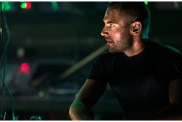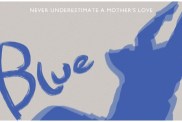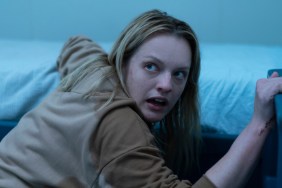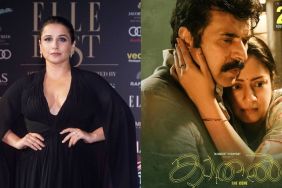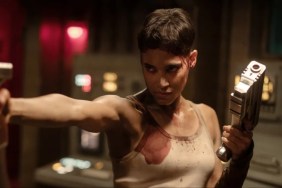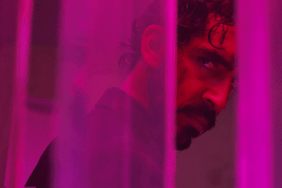ComingSoon Editor-in-Chief Tyler Treese spoke with director Parker Finn about his popular horror film, Smile. Finn discussed the appeal of bleak endings and how to properly use gore. Smile is now available to buy digitally and to stream on Paramount+.
“After witnessing a bizarre, traumatic incident involving a patient, Dr. Rose Cotter starts experiencing frightening occurrences that she can’t explain,” reads the film’s synopsis. “Rose must confront her troubling past in order to survive and escape her horrifying new reality.”
Tyler Treese: I read that the film was originally targeted for a streaming release, but got such good test screenings that they moved it to theatrical. What did that support from the studio really mean to you when they bumped it up and made it a big release?
Parker Finn: Yeah, even from the beginning, the opportunity to have made this film with Paramount was absolutely a dream come true. I was very excited that they got behind the film and, as a first-time filmmaker, provided me with the resources to realize it. When that decision was made to take the film to a wide theatrical release, that was like a real “pinch me” moment. It was beyond exciting, and I’ve got to tip my hat to Paramount for getting behind it in such a big way and putting together an amazing marketing campaign. I want to make movies that are designed to be seen big and loud and in a communal experience. That was the intention with making Smile. [I’m] so glad that people got to see it that way.
The marketing was really inventive. I loved that they had the people in the NBA playoffs in the crowds smiling so creepily. How cool was seeing all the different ideas that they came up with it?
It was really fun. We were having a lot of meetings and what I love about Paramount marketing is how good they are at thinking outside of the box. They wanted to do something that would feel unique. They wanted to do something that felt really kind of guerilla in nature, and the idea of sending smilers to sporting events came up. They always said, “we don’t want to put our thumbs on the scale. We don’t want to make it feel forced.” We just want to see if we can organically get people to notice.” I remember when that started to take off and started getting reposted everywhere and shared very widely … it was so cool. People got to connect the dots and figure it out. And so many people, I think, had no idea the movie existed suddenly because they were watching a baseball game. It was a very fun thing to get to be part of.
When you watch a film nowadays, there’s almost always a very safe, happy ending. You don’t go that route. It’s not a cheerful ending. What went into the decision to not end the curse and have a bit of a downer there? I’m sure it shocked a lot of the audience.
I’m not a big fan of endings that are tied up neatly with a bow. I think sometimes it can be too easy or maybe not ring as true as the rest of the film. From an early point, I knew I was interested in following this story to its worst logical conclusion. But I also wanted to make sure that there was an emotional catharsis that we had before that, you know? I guess I kind of wanted to have my cake and eat it too. But to see if we could give Rose this conclusion to the journey that we’ve been with her on — this really personal journey — would hopefully feel satisfying. But at the same time, I think that sometimes there’s just evil in the universe, and you can’t always stop an inevitable force of nature. To me, it felt like there was something really, really evil about doing that. I don’t know, it was always part of the story.
I love that. And the film was such a success and had some smart world-building. You could do a sequel that takes place at the end of the film, but you also talk about, “Oh, there’s these other chains happening in different countries.” There are so many awesome points where you could launch off into spin-offs. Was that in mind when you were creating that world-building, or is it just a happy accident now that it’s so successful that there are so many launching points?
Never in a million years did I think that people were going to be asking me for another one of these movies, which is amazing! I think there’s a lot of exciting stuff that could be done in the world of Smile. There’ are a lot of corners that I purposely left unexplored and things that I wish I could have done in the first one, but there just wasn’t room to do. That would be really exciting. What I think is really important about Smile is the character story at the center of it and how the emotionality and the themes of the character are so tied in to what’s happening. And that’s really important, I think, that if there was ever a consideration for a more Smile, that that would be part of what it’s doing and that it would feel … maybe unexpected from what we experienced in the first movie. Another film might do something that feels totally different yet is uniquely Smile at the same time.
One thing I really loved about the movie was the uncertainty throughout. With the mental imagery, you’re able to lay down the work for these paths that are teased, but it doesn’t go down. So how fun was working within the expectations of viewers and being able to take them on such a wild ride?
I really love crafting things that have a real audience-participatory element to them. That, for me, is really fun if I can get people cringing or squirming in their seats or laughing nervously because they’re really uncomfortable or then at moments like jumping out of their seats in surprising ways. I love guiding an audience down a path and then pulling the rug out from underneath them — it’s one of my favorite things to do. But it also felt very much like it was tied to the motifs of the film: what is happening to Rose and what the supernatural elements are doing to her. The movie is doing the same thing to the audience and it’s creating the same experience for the audience that the character is feeling. I really love that element of the film.
Were you able to go to some theaters and watch regular moviegoers experience it and go on the ride?
Yeah, I went to a couple of screenings opening weekend, which were really fun because they were sold-out screenings, and I just went anonymously and watched with the audience. The whole reason to do any of this is for audiences and hearing them connect with and embrace the film the way that it seems to when you’re in the theater with them is amazing. Making a movie is so much hard work and that’s what makes it all worth it.
There are some really inventive and fun death scenes in this film. How was deciding how much gore is too much?
I love well-used gore, when it’s used to precision effect. Knowing like when to use restraint and when to go all in on something I think is an important line to walk. There’s a lot of different filmmaking elements coming together around the gore or the violence that I think are hopefully elevating the experience of it, like how we’re using the camera, the performances, the sound design, and the score. Bringing all [that] stuff together while also pairing practical effects with VFX, you can create this really unsettling experience and I was just really happy that we got to pull some of those off.


